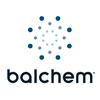Explore all the information on
Heat stress in dairy cattle
Welcome to the page about Heat stress in dairy cattle of Engormix; a source of knowledge on Heat stress in dairy cattle.
Summer losses in milk production are usually related to the negative impact of summer heat stress on the lactating cow. In the last 40 years, some studies realized in different parts of the world showed that also dry cows are negatively affected, when subjected to heat stress conditions. These losses are mainly related to lower milk volume and solids production, as well as fertility traits in early stages of the subsequent lactation. Heat stressed dry cows also suffer from higher incidences...
Comments : 1
Recommendations: 0
In a survey that we carried out recently in Israel, we found a great variation between farms, in terms of the number of hours along the day the cows are in "heat stress" condition (body temperature above normal). This variation is correlated with cow’s milk yield and breeding performance during summer months. As time in a day, cows face heat stress is longer, the drop in milk production and conception rate in the summer (as compared to winter levels) is greater. In this article,...
Comments : 14
Recommendations: 2
Climate change is one of the most important environmental realities that human faces in this century. Not only because of the effects it has on the different human spheres, but because it represents a challenge for the development model that human has assumed since the industrialization period (Estenssoro 2010 and Lemaire et al. 2019). High temperatures and variations in the relative humidity of the environment are common in tropical summers and are considered as the most influential...
Comments : 0
Recommendations: 0
In a lecture I gave at the 29th Israel Dairy Conference, held in Jerusalem in November 2017, I presented the principles of my work in consulting dairy farms around the world on coping with negative effect of summer heat stress, and the achievements we reached in different countries due to the correct implementation of cow cooling methods. At the beginning of my lecture, I presented the basic conditions for obtaining the best results from cooling the cows, in projects in which I operate,...
Comments : 3
Recommendations: 5
...
Comments : 8
Recommendations: 0
Heat stress refers to the sum of non-specific physiological responses of the organism at high temperature to any requirements of the thermal environment. The main factors causing heat stress are ambient temperature, relative humidity, solar radiation, and airflow. It is judged that the heat stress of dairy cows is mainly reflected by temperature and humidity index (THI). When THI > 72, heat stress occurs. Temperature? (?) Relative Humidity(100%) 30 40 50 60 70 80 90 25 (77) - - 72 73 74...
Comments : 0
Recommendations: 0


Evaluation of the safety of an algal biomass as an ingredient for finishing cattle
Suggested link
The summer heat stress is one of the largest causes of economic losses to dairy farms in the world. In particularly hot regions, a drop of more than 1,500 liters par lactation from cow’s potential is reported, with a loss in potential annual net income of about $ 600 per cow. Optimizing cow cooling can reduce the annual production loss to less than 200 liters, and the financial loss to almost $ 100, improving per cow profitability by 500 $, annually. In recent years, we started...
Comments : 0
Recommendations: 1
In the last 40 years, Israeli researchers realized comparative studies in order to define the negative effect of heat stress in dairy cows and the effect of using cooling methods to mitigate the heat and reduce the losses in the productivity and fertility of the cows during summer. Recently, an index called "summer to winter ratio" was developed in the Israeli dairy sector. This index allows to...
Comments : 3
Recommendations: 1
Achieving high conception rate is one of the conditions for achieving efficient production of milk at farm level. For many years the Israeli dairy industry suffered, like other farms in warm countries, a significant decline in the ability to pregnant the cows during summer months, causing reduction in the efficiency of milk production and seasonality in milk supply to the industry and market. Unlike the effect of heat on cow's production which is largely depends on the cow's food...
Comments : 5
Recommendations: 5
Dairy sectors all over the world have been using the cattle heat load index (THI) as a mean of characterizing the climatic conditions to which cows are exposed. This is true when analyzing the results of experiments and surveys, as well as the routine by which milk producers operate their farms. The heat load index is based on a formula that includes the ambient temperature and relative humidity at a given time. Until recently, the value of THI 72 had been defined as a threshold value...
Comments : 0
Recommendations: 1
The "Winter-Summer Ratio" report was developed by Dr. Israel Flamenbaum and Ephraim Ezra. This report reflects the gap in the performance of cows in different seasons and the ability of the individual farm to cope with the negative impact of the summer. The report has been published regularly since 2005, including milk production, fat and protein percentages, SCC, and Conception Rate to all inseminations. For the analysis three...
Comments : 5
Recommendations: 2
Cooling means to reduce heat stress from cows was developed over the last four decades in Israel, and are applied to a different degree of success in many farms in the world. Cooling cows in the farm is based on the daily routine, which includes of cooling the cows by a combination of wetting and forced ventilation in the waiting yard and in the feeding line. In addition, cows are force ventilated in resting area. ...
Comments : 4
Recommendations: 5


Evaluation of the safety of an algal biomass as an ingredient for finishing cattle
Suggested link
Summer heat stress causes significant economic losses to the U.S. livestock and especially the dairy industry. Different studies conducted in the United States indicate an annual loss of about $ 1.5 billion to the dairy US industry. This is due to unsuccessful confrontation of US dairy farmers with the heat stress problem. The losses differ of course, between different regions of the United States, with northern temperate climates, the annual milk loss per cow in Midwest...
Comments : 7
Recommendations: 1
Summer losses in milk production are usually related to the negative impact of summer heat stress on the lactating cow. Actually, this is true, due to the large negative effect of heat stress on feed consumption and the efficiency of feed utilization of the lactating cow, as well as on reproductive traits. Recently, it was found that also dry cows, although they are not producing milk, are negatively affected when subjected to heat stress conditions, mainly, due to lower milk and milk solids...
Comments : 3
Recommendations: 4
Get an easy way to measure heat stress in your dairy farm and save your income from going up in smoke! Think about our Phileo heat stress App for dairy cows....
Comments : 5
Recommendations: 6
Heat stress is now considered to be the cause of the largest economical loss to the world’s dairy sector. The reasons for this are global warming, the increase in milk output per cow and the “immigration” of dairy sectors from temperate to tropical and sub-tropical regions, where the demand for milk in most cases is increasing.
Heat stress negatively affects the...
Comments : 36
Recommendations: 0
Half of the birds reared worldwide are estimated to suffer from the consequences of heat stress during the summer period. The first visible sign is an increase in the water: feed ratio, however recent research has also shown that excessively hot conditions have an impact on the gut structure and its permeability. Reduced feed consumption and decreased intestinal integrity and function result in the decreased energy intake, animal discomfort and the reduced...
Comments : 5
Recommendations: 0
Cooling means to reduce heat stress from cows have been developed over the last four decades in Israel, and are applied to a different degree of success in many farms in the world. Cooling cows in the farm is based largely on the daily routine, which includes cooling the cows in the waiting yards, before and between milking sessions, as well as in the feeding line, around feeding time. Cows are usually forced ventilated in resting area, if it is in free stalls or compost...
Comments : 0
Recommendations: 2


Evaluation of the safety of an algal biomass as an ingredient for finishing cattle
Suggested link
Taxation on the dairy activity varies from country to country. Some countries exempt farmers from paying income tax, others reduced tax rates and some countries ask dairy farmers to pay full tax on their income. However, no country exempts the dairy farmers from paying "tax to the summer", which is paid due to lack of coping with the summer heat stress negative effect on their cows.
How much is this tax rate? This is, of course, different from country to country and depends on...
Comments : 1
Recommendations: 4
Dealing effectively with heat stress in dairy herds is an essential management issue throughout the nation, but Southeastern dairy producers are forced to deal with extreme heat and humidity for prolonged periods. Heat stress decreases feed intake and milk production, decreases milk components including fat, lowers breeding success, and compromises the immune system, which increases the risk for multiple diseases. Hot and humid environments also allow mastitis pathogens to thrive. Below...
Comments : 4
Recommendations: 3











